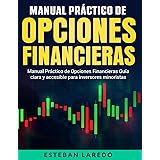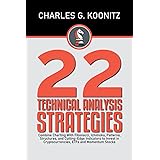Have you ever felt restricted in your crypto trading journey, especially when trying to access innovative platforms from within the United States? As discussed in the insightful video above, a monumental shift is currently underway, thanks to a recent announcement from the Commodity Futures Trading Commission (CFTC). This development, centered around the Foreign Board of Trade (FBOT) Advisory, is set to redefine how US customers interact with non-US crypto exchanges, potentially unlocking an immense wave of liquidity and opportunities.
The implications of this regulatory clarity are far-reaching, promising to dismantle existing barriers and foster a more open, competitive environment for digital asset trading. It is not an exaggeration to say that the landscape of US crypto access is about to be transformed.
Understanding the CFTC’s FBOT Advisory: A New Era for US Crypto Access
Firstly, to fully grasp the significance of this news, it is crucial to understand the key players involved. The CFTC, or Commodity Futures Trading Commission, serves as the primary regulator for the US derivatives markets. This includes futures, leverage trading, and other complex financial products that are often sought after by crypto traders.
Traditionally, non-US exchanges faced considerable hurdles in offering their services to American citizens. Two primary categories for registration under the CFTC exist: the Foreign Board of Trade (FBOT) and the Designated Contract Market (DCM). An FBOT refers to an exchange or market located outside the United States, while a DCM operates under direct CFTC oversight and requires a physical presence within the US.
Previously, a distinct lack of clarity existed regarding how crypto exchanges, particularly those not based in the US, could legally onboard American customers. This regulatory ambiguity, which persisted through various administrations, made the path to compliance incredibly complex and costly. As an example, acquiring a DCM registration has historically been an arduous, multi-billion dollar endeavor, often requiring exchanges to be physically located within the United States.
Now, however, the CFTC Chair has clarified that the existing regulatory framework for FBOTs is deemed sufficient. This groundbreaking advisory essentially provides a clear, legal pathway for non-US crypto exchanges to register as FBOTs and offer derivatives trading to US customers. This move is akin to suddenly illuminating a path through a dense fog, where previously only uncertainty reigned.
Unlocking Billions: The Surge in Liquidity and Trader Freedom
Secondly, one of the most immediate and impactful consequences of this advisory is the potential for an unprecedented influx of liquidity into the US crypto market. For years, American traders have been constrained to a limited number of regulated US-based exchanges, often missing out on diverse trading products and competitive fee structures offered globally. This situation frequently necessitated the use of VPNs or other workarounds, leading to a less secure and more cumbersome trading experience.
With this new regulatory clarity, non-US crypto exchanges are now encouraged to apply for FBOT registration, simplifying their entry into the American market. It is anticipated that legal departments across countless exchanges will swiftly begin the application process. This shift effectively opens the floodgates, allowing potentially hundreds of billions of dollars in new liquidity to flow into the US crypto ecosystem. The distribution of funds is expected to diversify significantly, moving beyond just major US players like Coinbase and Kraken to encompass a broader array of global platforms.
This development can be viewed as the removal of a significant bottleneck, allowing capital and trading activity to flow more freely. US customers will soon be empowered with greater choice, enabling them to select exchanges based on features, fees, and product offerings rather than being limited by geographic restrictions.
The Shifting Tides: Impact on US-Based Exchanges
Furthermore, while this news is a boon for US traders and non-US exchanges, it is widely believed that US-based crypto exchanges could face significant headwinds. For a considerable period, exchanges like Coinbase and Robinhood have operated in a somewhat monopolistic environment within the United States, benefiting from the restrictive regulatory landscape that limited competition.
The speaker highlighted concerns about potential stock price impacts for these entities. For instance, Coinbase was observed to be down 1.5% pre-market shortly after the news broke, while Robinhood saw a modest decrease of 0.2% before stabilizing slightly. The basis for these concerns stems from their significant reliance on the US market; website traffic analysis indicates that approximately 52% of Coinbase’s traffic (and 47% on desktop) originates from the United States, with Robinhood showing an even higher dependence, with over 80% of its traffic coming from US users. This reliance suggests that increased competition could directly impact their user base and, subsequently, their market valuation. It is like an established local shop suddenly facing competition from numerous international chains, forcing a re-evaluation of strategies and offerings.
As US customers gain access to a broader spectrum of global exchanges, these incumbent platforms will be compelled to innovate and compete more aggressively on features, fees, and product diversity. The era of limited choice for US traders is swiftly drawing to a close, ushering in a more competitive marketplace.
Perpetual DEXs: Navigating a New Landscape
In addition to centralized exchanges, the new CFTC advisory is also expected to influence the landscape of decentralized perpetual exchanges (DEXs). Platforms like Hyperliquid, DYDX, and Arbitrum’s derivatives offerings have garnered considerable popularity among US users, primarily because they offered a self-custodied and often less regulated avenue for trading derivatives. Their appeal stemmed from the ability to trade without needing to go through a licensed, centralized exchange, thereby sidestepping some of the previous regulatory ambiguities.
The speaker noted that Hyperliquid, an incredibly popular perpetual DEX, had already seen a significant drawdown, dropping 14-16% from its recent highs. This movement suggests that the market may be foreseeing a shift in user behavior. Once a clear and legal regulatory framework is in place for centralized non-US exchanges, the perceived advantage of using a perpetual DEX purely for regulatory evasion might diminish for some users. It is reasoned that many users, given a legal and efficient alternative, may choose to move their trading to regulated platforms that offer similar leverage and derivatives products, especially with competitive fee structures.
While the product quality of DEXs like Hyperliquid remains high, the argument is that the unique selling proposition of ‘regulatory bypass’ for US customers may become less compelling. The coming weeks and months will reveal how exchanges adapt and how user preferences evolve in this newly clarified environment.
Broader Market Dynamics and Trading Insights
Beyond the CFTC news, other significant developments are shaping the crypto market. Chainlink, for instance, recently garnered attention through a partnership with the Department of Commerce to bring macroeconomic data on-chain. This collaboration signals a growing acceptance of blockchain technology by government entities, demonstrating the utility of decentralized oracle networks. However, despite an initial pump of around 10% on the news, Chainlink retraced almost the entire move, indicating that insiders may have offloaded their holdings during the price surge.
Similarly, Pyth Network, an oracle provider, experienced an extraordinary surge, flying up 100-110%. Such parabolic moves are frequently driven by speculative interest or perceived affiliations with major news, though caution is often advised against buying into such rapid spikes.
From a technical analysis perspective, the broader market is currently navigating a period of volatility. The speaker discussed a recent pullback, which was anticipated as a retrace down to an hourly demand zone. This is a common market structure where, after forming a higher high, prices temporarily dip before potentially continuing their upward trend. The overall market cap is being closely watched, with key levels identified around 3.74 trillion, and a critical support at 3.69 trillion on the hourly chart. The long-term outlook, however, remains bullish for many, with expectations of reaching new highs above 4 trillion. The trading philosophy often emphasized is to “take the elevator upstairs down,” meaning to align with the overarching market trend (the elevator going up) rather than getting caught in short-term pullbacks (the stairs going down).
The CFTC’s FBOT Advisory truly represents a pivotal moment, fundamentally reshaping the landscape of US crypto access. The ramifications for US customers, incumbent exchanges, perpetual DEXs, and the overall market liquidity are immense, signaling a new chapter of growth and competition within the digital asset space.







